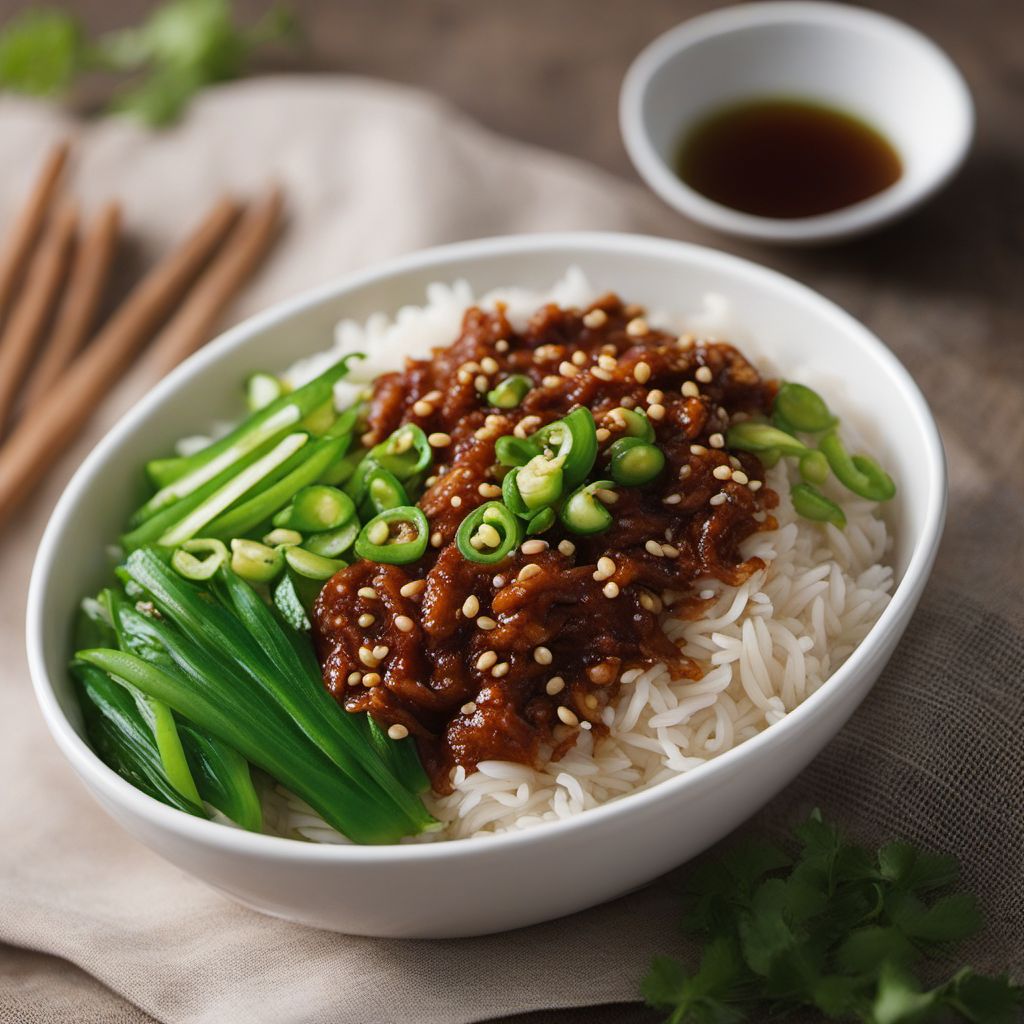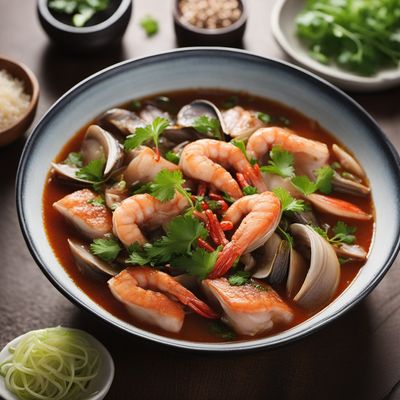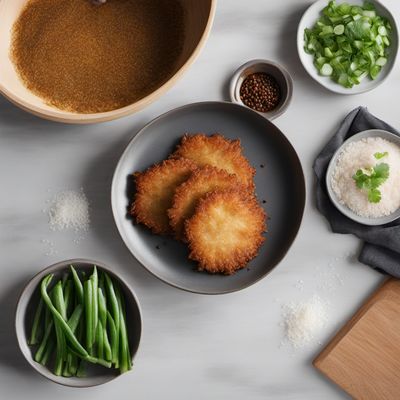
Recipe
Homemade Ssamjang: A Flavorful Korean Condiment
Umami Explosion: Homemade Ssamjang Recipe
4.7 out of 5
Indulge in the rich and savory flavors of Korean cuisine with this homemade Ssamjang recipe. Ssamjang is a traditional Korean condiment that adds depth and complexity to any dish it accompanies.
Metadata
Preparation time
10 minutes
Cooking time
N/A
Total time
70 minutes (including refrigeration time)
Yields
4 servings
Preparation difficulty
Easy
Suitable for
Vegetarian, Vegan, Gluten-free, Dairy-free, Nut-free
Allergens
Soy
Not suitable for
Paleo, Keto, Low-carb, Soy-free, Egg-free
Ingredients
-
1/2 cup (120g) fermented soybean paste (doenjang) 1/2 cup (120g) fermented soybean paste (doenjang)
-
1/4 cup (60g) chili paste (gochujang) 1/4 cup (60g) chili paste (gochujang)
-
2 cloves of garlic, minced 2 cloves of garlic, minced
-
1 tablespoon sesame oil 1 tablespoon sesame oil
-
1 tablespoon honey or brown sugar 1 tablespoon honey or brown sugar
-
1 tablespoon rice vinegar 1 tablespoon rice vinegar
-
1 tablespoon toasted sesame seeds 1 tablespoon toasted sesame seeds
-
1 green onion, finely chopped 1 green onion, finely chopped
-
1 teaspoon soy sauce 1 teaspoon soy sauce
-
1 teaspoon grated ginger 1 teaspoon grated ginger
-
1/4 teaspoon black pepper 1/4 teaspoon black pepper
-
Optional: 1 teaspoon fish sauce for added depth of flavor Optional: 1 teaspoon fish sauce for added depth of flavor
Nutrition
- Calories (kcal / KJ): 70 kcal / 293 KJ
- Fat (total, saturated): 3g, 0.5g
- Carbohydrates (total, sugars): 8g, 3g
- Protein: 3g
- Fiber: 2g
- Salt: 1g
Preparation
-
1.In a mixing bowl, combine the fermented soybean paste (doenjang) and chili paste (gochujang).
-
2.Add minced garlic, sesame oil, honey or brown sugar, rice vinegar, toasted sesame seeds, green onion, soy sauce, grated ginger, black pepper, and fish sauce (if using).
-
3.Mix all the ingredients thoroughly until well combined and smooth.
-
4.Adjust the seasoning according to taste preference by adding more chili paste for spiciness or honey for sweetness.
-
5.Transfer the Ssamjang to a clean jar or container and refrigerate for at least 1 hour to allow the flavors to meld together.
-
6.Serve as a dipping sauce, spread, or marinade alongside your favorite Korean dishes.
Treat your ingredients with care...
- Fermented soybean paste (doenjang) — Look for a high-quality doenjang that is rich in flavor and has a smooth texture. If unavailable, you can substitute with miso paste, although the taste will differ slightly.
- Chili paste (gochujang) — Adjust the amount of gochujang according to your spice preference. For a milder version, reduce the quantity or mix with a mild chili paste.
Tips & Tricks
- For a smoother texture, you can blend the ingredients in a food processor or blender.
- Customize the sweetness by adjusting the amount of honey or brown sugar.
- Experiment with additional ingredients like minced onion or Korean pear for added complexity.
- Store the Ssamjang in an airtight container in the refrigerator for up to two weeks.
- Use Ssamjang as a marinade for grilled meats or as a flavor enhancer in stir-fries.
Serving advice
Serve the Ssamjang alongside a platter of fresh lettuce leaves, grilled meats, and an assortment of Korean side dishes (banchan). Encourage guests to create their own lettuce wraps by spreading a spoonful of Ssamjang on a lettuce leaf, adding their choice of fillings, and wrapping it up.
Presentation advice
Present the Ssamjang in a small bowl or dish, garnished with a sprinkle of toasted sesame seeds and finely chopped green onions. Surround the bowl with colorful lettuce leaves and an array of vibrant banchan to create an enticing visual display.
More recipes...
More Korean cuisine dishes » Browse all

Pyeonsu
Pyeonsu is a traditional Korean dish that is typically served as an appetizer. The dish consists of a thin dough that is filled with a mixture of...

Mujeon
Radish Pancake
Mujeon is a Korean dish made with sliced radish that is coated in a flour and egg batter and pan-fried.

Jaengban guksu
Jaengban Guksu
Jaengban guksu is a Korean cold noodle dish that is perfect for hot summer days. It is made with thin wheat noodles, a variety of vegetables, and...





